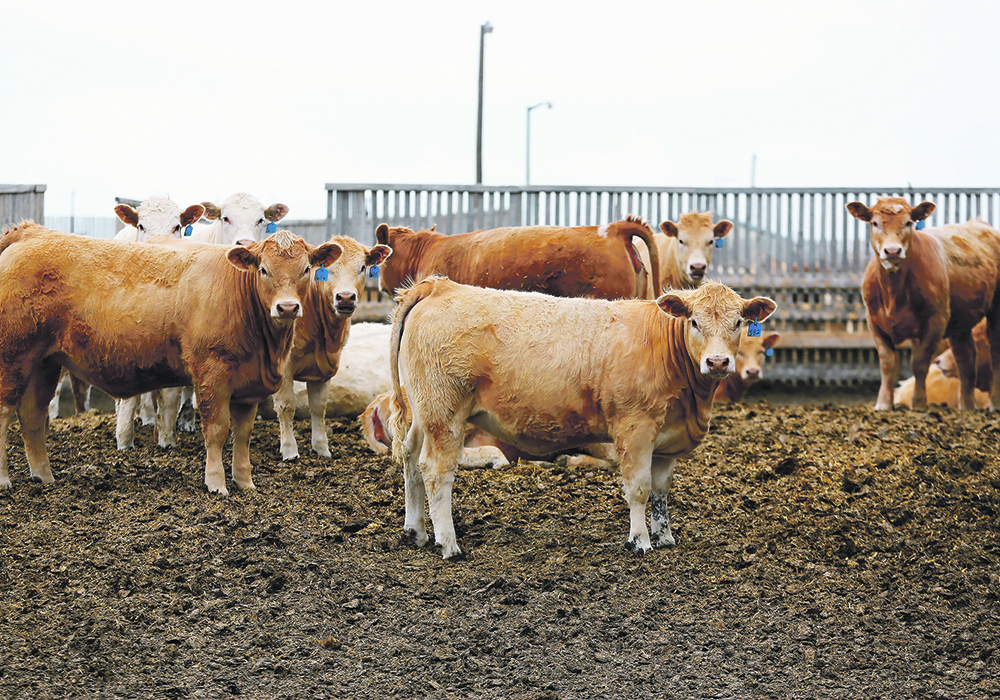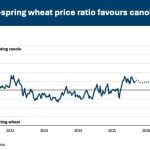Study will look at setting up a captive insurance company to reduce premium costs and allow more coverage flexibility
The Alberta Cattle Feeders’ Association may create its own insurance company as part of a feasibility study that will examine potential ways it could help members faced with rising insurance costs.
“I mean, ag, we’re a small minority when it comes to insurance, and so it’s just harder and harder for us to get insurance that’s affordable,” said chair Jake Bueckert. “And so, we just feel that this is one way that we can control the cost of it.”
The option of ACFA forming a captive insurance company is provided under Bill 76, which was passed in 2021 by the Alberta government. Such companies provide insurance specifically for the entities that create and own them, potentially reducing the cost of premiums and allowing more flexibility for coverage.
Read Also

Farmers urged to be grain-safe this fall
Working around grain bins comes with risk, from farmers falling to drowning in grain: Experts have five tips to help avoid grain-related accidents this harvest.
The study will seek to gather 10 years of data from each cattle feeder to determine if this is feasible, which means the success of the research depends on their involvement, said Randy Buschmann, partner and broker with Acera Insurance Group.
“Again, I can’t stress enough your participation in this is really in your best interest and in the best interest of the association.”
He spoke at the ACFA’s annual general meeting, which was held during the recent Alberta Beef Industry Conference in Banff, Alta. Besides captive insurance, the study will examine options such as forming a reciprocal insurance program, said Buschmann during an interview.
“It’s similar to a captive and its attributes, but it’s not an exactly formed entity or corporation. And if neither captive nor reciprocal works, then is there availability to sit down with a number of insurers to form a group plan that maybe has some characteristics that would be of great assistance in, for example… the property side or in the transportation liability side?”
This year is expected to be a “hard market” for insurance in Alberta, he said. The term refers to a declining capacity for many types of insurance, coverage terms are restricted and premiums increase.
Reinsurers, which are companies that provide financial protection to insurance companies, haven’t had sustainable profits for three years, said Buschmann. It is largely due to the accelerating cost of weather-related claims in which risk is boosted by factors such as climate change, along with inflation, he said.
Shareholders in reinsurers will expect better returns this year, he added.
“This is going to have ramifications practically in every sector of the insurance business with the exception of auto because the Government of Alberta has put a freeze on auto premiums,” he said.
“So, anything outside of that: home premiums, commercial business premiums, cattle feed operations, standard crop, agricultural, manufacturing, you name the risk sector, and some will be affected more than others.”
It will be one of only four times Buschmann has experienced a hard market since he started working full time in the insurance industry in 1977, with the last one occurring about 15 years ago.
“There’s a whole generation of individuals within the industry that have not experienced a hard market in their career.”
Bill 76 aims to help businesses in any sector in Alberta that face challenges dealing with traditional insurers. ACFA has contacted other provincial agricultural associations about the idea of potentially forming a captive insurance company, said president and chief executive officer Janice Tranberg.
“We reached out and there has been some interest, but we just decided to just go ahead ourselves (with the study) because it’d be quicker and we could move down the road, so again, how broad or narrow we make it, it would just be speculation. We just need to see what comes out of it first.”
ACFA currently has more questions than answers, said Bueckert. Depending on the study’s findings, “are there other industry groups like canola or potatoes or somebody that might want to join and make it because the larger the captive, the broader the risk?”
As someone who has up to 20,000 head of cattle at Driland Feeders near Warner, Alta., Bueckert said the premiums his operation must pay for equipment and trucks is in the range of $40,000 to $60,000 per year, “so it just continues to go up.”
Many cattle feeders are dealing with increasing insurance rates and premiums along with restrictive coverages, said Kyle Tansey, client executive for alternative risk transfer at Acera.
Although cattle feeders in Alberta are facing a severe shortage of truck drivers, insurance companies are making it difficult to bring in new drivers who lack experience, said Tranberg.
“One of the big things that came forward to me was that you get a Class 1 driver who gets his licence, but then a lot of the insurance companies are now saying they won’t insure them till they have two years’ experience. Well, how do you get that two years’ experience?”
Tansey said such drivers are often delegated to the residual insurance market, “which is ultimately a pool of the worst auto risks within the province, so there’s a likely mismatch between the actual profile of that driver and the associated premium that they’re having to pay at the moment.”
The number of people among traditional insurers with an understanding of agriculture is declining, said Buschmann.
“Some of them have no idea or concept of a farming operation, or let alone a cattle feeding operation,” he told the ACFA at its meeting.
“So by having your own captive, you’ll be in control of that. You’ll be able to have individuals that will have the expertise pertaining to the cattle feeders’ association, and along with that, potentially more control of what you’re paying and what’s available to insure.”
















